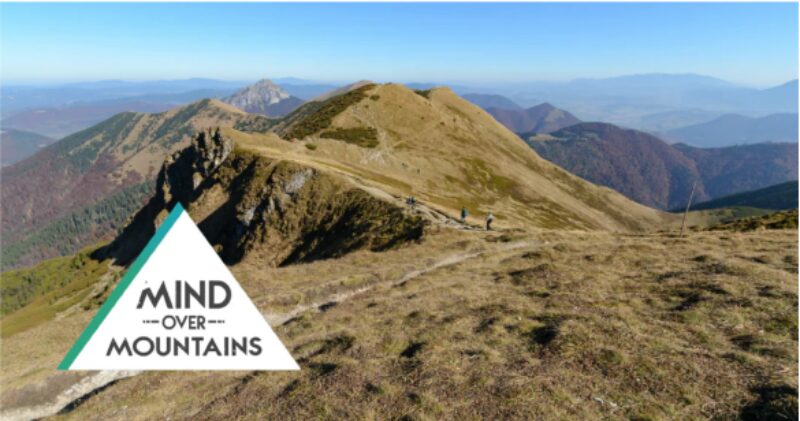
More Than a Walk: How Mind Over Mountains Transforms Mental Health Through Nature, Movement & Meaningful Support
The first of our articles from our new Charity Partner, Mind Over Mountains!
We know that movement matters. That getting outdoors can shift our mindset, clear the fog, and bring a sense of calm when everything else feels overwhelming. For many of us, running or walking in nature is a lifeline; a simple, powerful tool for our mental wellbeing.
At our charity Mind Over Mountains, we believe in that power too - but we also know that nature alone isn’t always enough. That’s why we go one step further:
Our wellbeing walks and retreats offer more than just fresh air and beautiful views. Alongside the guided walking and mindfulness, you’ll find trained coaches and counsellors walking with you - gently offering support if and when you need it. It’s relaxed, never pressured. Some people come for the scenery and silence. Others come to talk about things they haven’t been able to say out loud before. Either way, you’ll be met with kindness, not judgement.
As one participant put it:
“I felt I could truly be myself. The group was amazing - the support and friendships made were incredible. I left feeling I had shared, listened, learned and grown.”
There’s something about walking side-by-side, not face-to-face, that makes it easier to open up. No awkward silences. No expectations. Just time to talk - or be quiet if you prefer - with people who get it. People who care, even if they’ve only just met you.
We hear from so many people that they’ve never felt able to speak this openly, even with close friends or family. In everyday life, there can be a fear of being judged, misunderstood, or bringing others down. But on a walk with us, there’s space to say what’s really going on, in your own time, and in your own words.
These aren’t clinical sessions or intense therapy days. They’re peaceful, grounded experiences that give you a chance to reset and breathe - with just the right mix of quiet reflection, group chat, and shared purpose. Whether it’s a one-day walk or a residential weekend in the hills, it’s time just for you, held by nature and a team that really cares.
“For the first time in ages, I didn’t feel like a burden,” another participant shared. “I could talk openly without fear of judgement - or just enjoy the company of others in silence.”
And while we take mental health seriously, that doesn’t mean the days are heavy. There’s always room for laughter, friendship, and those little glimmers of joy that remind us why we keep going. And time of course to enjoy the amazing places our walks take us to.
It’s not about fixing everything overnight. It’s about taking one good step - then another - and realising that maybe you’re not as alone as you thought.
So if you're looking for a gentle way to care for your own mental health (or for someone else your care about) - or just want to spend a day in nature with likeminded people who understand, you're very welcome with us.
“It’s the only place I’ve ever felt completely accepted for who I am. I left with a lighter heart and new hope.”
You can explore our upcoming walks and retreats here, and read more about what we offer at Mind Over Mountains https://mindovermountains.org.uk/collections/mentalwellbeingwalksandretreats
Run for Something Bigger with Lakeland Trails
If you’re more of a runner than a rambler, there’s still a way to be part of our movement for better mental health. Mind Over Mountains is proud to be an official charity partner of Lakeland Trails and its stunning series of trail running events through the Lake District’s most iconic landscapes.
Whether it’s your first 5K or your fiftieth ultra, you can choose to run for Mind Over Mountains and make every step count for someone who’s struggling. By fundraising as part of your race, you’re helping us provide more places on our walks and retreats for those who need support but might not be able to access it elsewhere.
Your challenge could be the start of someone else’s recovery.
Because every mountain climbed, every mile run, and every donation raised helps us walk alongside more people when it matters most. Thank you!
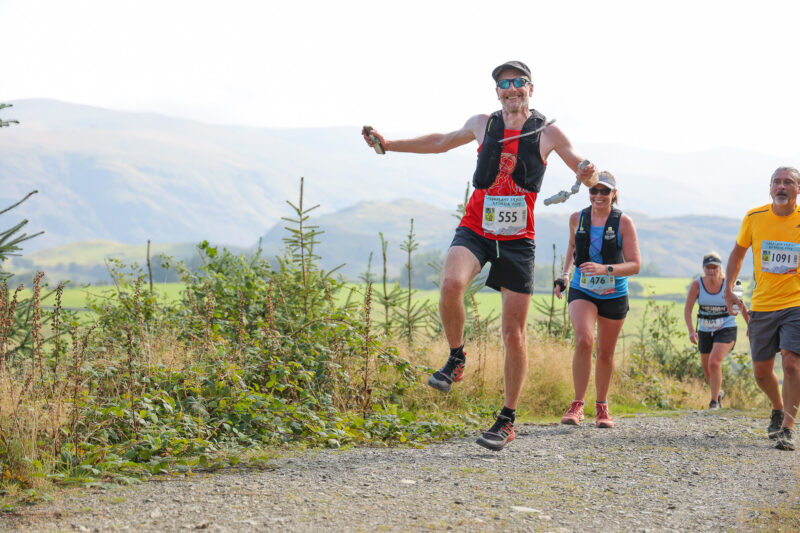
Fresh from taking part in Lakeland Trails in Keswick, our Race Director reflects on his 11 years on the Lakeland Trails...
There’s something special about the Lakeland Trails’ events and they are hugely important to so many people. They helped me get my life back on track over 10 years ago, and, of course, remain hugely important to this day.
I took part in my first Lakeland Trails event in Keswick in 2013. I’d moved back to Cumbria the previous year to settle down with my then girlfriend and start what I thought was my dream job. As so often is the case, things didn’t go to plan! Newly single, I joined my local running club, St Bees Triers, as way of finding friends and also as a distraction from a challenging new job.
I’d always been in the cross country team at school so entering a trail run in the Lake District seemed like an obvious challenge. It still makes me smile when I see the photo of me on the course, under-trained, over-dressed but enjoying the freedom running on the trails brings. I’d not run so far for many years and the distant sound of Batala Lancaster as I approached Latrigg was most-welcoming.
Inspired by this first event, a few weeks later I marshalled at Helvellyn on what turned out to be a horrifically wet day – so much so that my offer of being in the remotest part of the course didn’t transpire as the 15k course was shortened!
Marshalling and running at the same event became the norm until I took responsibility for course and marshal managing. I’d quit the nightmare job and was looking for a challenge, gradually taking on more responsibility before my ear was bent by Lakeland Trails’ founder, Graham Patten. He’d started the events in 2004 with 80 runners, a far cry from the 1000+ we see at the events these days. He was looking to take a step back and it didn’t take long for me to say ‘yes’.
Lakeland Trails had been created to bring inclusive, family-friendly fun and excitement to running – a contrast to the perceived elitism of fell races where you’d just turn up, run and then that was you done. It probably explains why we get such a good mix of runners and why people take part because they don’t feel pressured into running all the way.
It was an easy choice really. From a job-perspective, I wasn’t being challenged in my current role and I saw it as a great opportunity to utilise my skills…and I got along great with all of the Crew. They do such a fantastic job, and we were pushing the envelope more and more with our informal bake offs at the events (perhaps it’s something we should bring back).
Of course, the main reason for saying yes was the events themselves. What better way to payback everything Lakeland Trails had done for me by enabling the events to continue to inspire, enthuse and provided all of the health benefits for the thousands of runners taking part each year?
The first Lakeland Trails’ events were game changers back in 2004 and even after 20 years, they remain the most popular series of events in the Lake District. Why’s that? Yes, the stunning routes play a huge part but it’s all of the people involved that sets us apart.
Feedback we regularly get is how wonderful our marshals are – always cheery, always supportive and out in all weathers to keep the runners safe.
We attract some of the leading trail runners - Damian Hall, holder of many endurance fastest known times, is a regular attendee, for example, and we always have a sharp end of elite athletes taking part.
It’s great having them along to the events but it’s equally important that we make trail running fun and accessible for everyone. After all, someone’s got to finish last and, as one of our regulars, Scottish Lassie Jane Malcolm once told me, “We’re not here to be fast, we’re here because we want to have fun!” My response, “That’s exactly why we love having you at the Lakeland Trails!”
It's a huge responsibility putting the events and I’m delighted that our new Event Manager, Dan Duxbury, is already doing such a fantastic job. So much so, I was able to get back to where I started my Lakeland Trails’ journey – back on the Lakeland Trails in Keswick to experience what it is that made me fall in love with the events. I can’t wait to do it again!
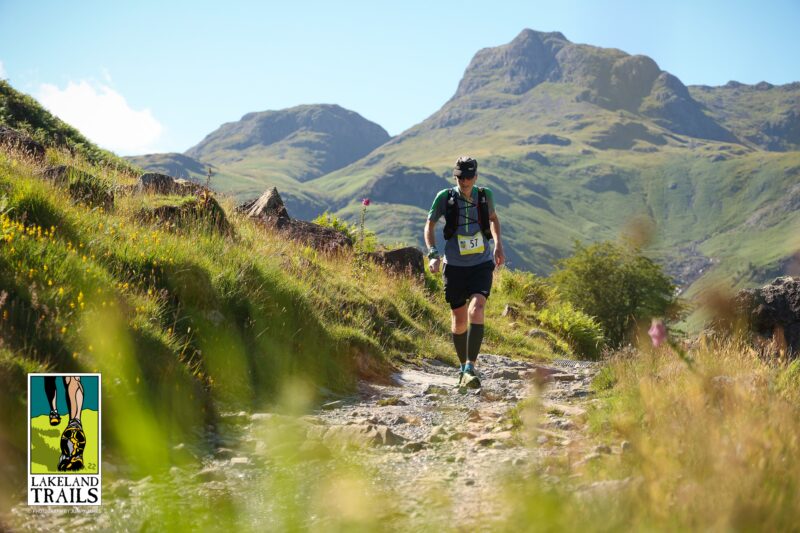
Andy Letheren is a long-term regular at Lakeland Trails, first running the events whilst his young children volunteered to now (usually) playing an important role in the Crew, ensuring the day runs smoothly. Having been on the Ultra Crew for a few years, he decided to run the Ultra 100k this July and here's his 'feedback' which just shows how much effort goes into the day...for everybody!
"This feels odd - me writing you a message of thanks after a LT event rather than anticipating one coming the other way - but it's been that sort of weekend.
Part of the reason I wanted to run the 100k was to judge just how hard it is. I had joked that it had to be easier than the jobs that so many of the Crew do - having completed, that no longer seems a joke; in many respects, running the thing actually is easier. My heartfelt thanks to everybody who made it happen.
It would be easy, after several years on the event delivery side, for any of us to become blase about the notes of thanks that we receive after each event, to just shrug and say something like 'that's just what we do' but, by swapping to the other side, I've a renewed appreciation and understanding of just how big a difference we can make. I'd like to offer my sincere thanks to everybody who worked so hard over the past few days to make Saturday such a memorable experience.
It seems wrong to single anybody out for special mentions but, to give a flavour, some notable memories
- Susan for being patient with me whilst she checked off all of my kit
- Viv following me round the Kentmere checkpoint with a jug of water trying not to get too frustrated while I faffed in my pack for the fuel I needed in my bottle first
- Andy Dobson patiently sharing his light at the top of Nan Bield after my torch had given the three death flashes telling me the battery needed changing
- Geoffers warning us at Mardale that we could ignore all the lights we could see heading up Long Stile towards High Street
- the team at Bampton not looking too upset when I had a minor moan about the bacon sarnies being 'contaminated' with ketchup
- the marshal in the car leaving Askham who was happy to chat about 'Type 2 fun' at 7am (or whatever time it was!)
- Gareth and Erica for the pre-made porridge in Howtown - sorry I couldn't eat it
- the marshal with the very detailed route direction off the top of Boredale Hause
- the team in Glenridding who convinced me a Coronation Chicken sandwich seemed a good idea
- Sandra and the team in Grasmere who had somehow remodelled the carnage from the past couple of events into a seeming oasis of calm (apologies to Sandra for the alarm caused when I was relaying my past experiences on Friday)
- the marshal at the drop off from the Wrynose road who happily converted '2.5k to the water stop' into 'old money' for me
- the two stood down marshals at the Wall End water stop who repeatedly checked I was OK while I was stood in the shade faffing with my bottles (again!)
- Isobel and Louise who both leapt to their feet at their marshal positions in Langdale to lie to me about how strong I looked
- Gareth (again) for the big shout at the finish
- Dawn for making sure I picked up my medal and T-shirt rather just wandering off at the finish
Clearly, it's easy for me to name lots of people in person - and there are many who I have missed/forgotten - but I could see exactly the same level of support being offered to everybody who was out there on the course. I'm also well aware that so many people put long hours into course marking, setting up and taking down the event field, sorting gear for the checkpoints, making sure we were properly registered before the start, accounted for at the finish and generally ensuring that things went as well as they did."
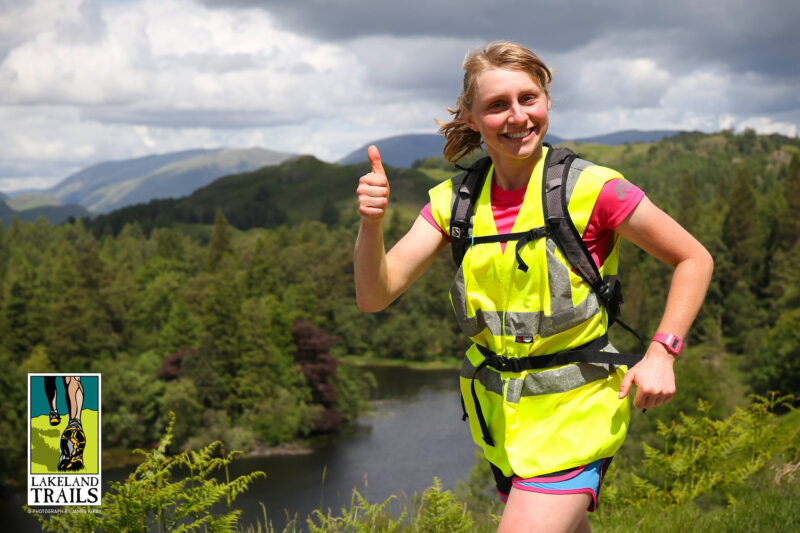
Through Meal to Medal Nutrition, Lakeland Trails Crew member Christina Wiejak offers several nutritional support packages for runners of all levels to optimise their training, performance and health through nutritional intake.
Performance Nutrition is not just reserved for the elite athlete; if you want to be the best that you can be, your nutritional intake is a key component in your preparation.
Christina has a huge amount of experience in sport so she understands the demands that we put upon ourselves when training for and competing in Lakeland Trails events. She has also competed to a high level in road and fell running, recently focussing her efforts into cycling, winning the iconic Three Peaks Cyclocross twice, as well as success at elite level in road, time trialling and cyclocross racing.
Nutrition for Ultra Programme – Event Preparation
This is an in-depth, specific and highly focussed 6-week programme to ensure that you are ready for your race. The key to fuelling for long events is practice, and therefore we will look to fully optimise your training fuelling to ensure that, come race day, you will have a strategy which you know works for you as an individual.
The process will start with a detailed review of your current nutritional practice and any particular areas in which you feel that you struggle with. With your input, we will then formulate a plan for your training and racing, paying particular attention to the unique demands of ultra-racing.
Regular discussions will allow us to adapt and improve the programme as we develop the ideal strategy for you.
This is an individualised and dynamic two-way process, which will allow you to arrive on race day feeling confident.
To enquire about this specific packages or to find out how Christina may be able to help you with your running nutrition, please drop her an email.
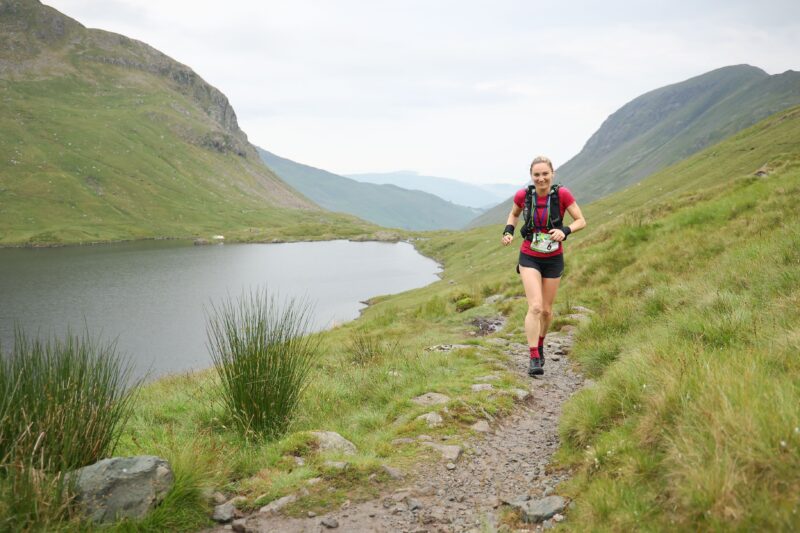
Winner of the women’s 2021 Lakeland Trails 100K Meryl Cooper is an ultra-running coach and health & lifestyle coach. In this blog post, she shares her knowledge and experience so you can better prepare for the Lakeland Trails 55k or 100k ultras.
Training:
Although July might seem like a long way away, these races require a lot of endurance. You can’t rush endurance development so you really need to start your training as early as you can (i.e now!). This will allow you to have a really good, long specific endurance block before race day.
Around this time (8 months out from the race), I would recommend lower overall weekly volume in terms of miles, but for you to include higher intensity intervals in a couple of sessions each week. You wouldn’t want to be doing this kind of higher intensity training nearer the race, so getting a good VO2 max block done now – then a more lactate threshold focused block afterwards – will allow you to raise your easy effort pace.
This will then set you up nicely for your endurance block, which will involve long hilly runs with around 200-350m of elevation gain per hour, depending on your target time for the race.
Recce the course:
I would include some recce weekends in the endurance block of your training plan so you know exactly what to expect on race day. This helps to ensure you pick the right kitand plan a really good fuelling strategy. You will also then have a better idea of how long each section might take you on race day.
Make some notes at the time as, if you are like me, you will have forgotten everything a few weeks later! I’ve been guilty in the past of sitting down to plan out my race and realising that I didn’t write any notes post recce. Trust me, it’s worth the effort.
As the 100K starts at midnight, I did my recce of the first few hours of the course in the daytime so I could actually enjoy and see the surroundings of this section too. In total I did the 100K route as a recce over 3 days.
Day 1 – Ambleside to Askham 41K, 1487m.
Day 2 – Askham to Grasmere 32K, 1190m.
Day 3 – Grasmere to Ambleside finish 28.7K, 946m.
Practice running in the dark and eating your race day food:
If you are racing the 100K or if your 55K might go into the night, I really recommend some late night running at some point in your endurance block training. As the nights are very light in the UK summer, it might mess a little with your sleeping pattern, so don’t try it too close to race day.
I went out around 11pm one night in June for a long run and finished around 2am. I discovered on this run that my headtorch wasn’t holding power and also that my stomach didn’t like running after what I’d had for dinner. It was a brilliant learning curve and I was so glad I did it before the race as I was then able to correct these mistakes. The end result was no issues on race day with my head torch or stomach!
Starting a race at midnight was a first for me and a bit of a concern, but testing things out beforehand removed my worries and once I started running the actual race, any feelings of tiredness disappeared. During the day of the race (before the midnight start), I stuck to eating quite plain carbohydrates (e.g. pasta, oats), included some protein and kept fibre and fat low. I did a big carbo-load for a couple days before this too.
Fuelling:
Running for long distances in the hills uses a huge amount of calories. You need to practice your fuelling strategy as much as possible in your endurance block and train your gut to take on carbohydrates whilst running.
In all runs over 2 hours I would recommend practising with full fuelling. If you do not fuel much at the moment, then start with 60g of carbohydrate an hour (e.g two TORQ gels). Build this up to 90g an hour. Some runners will have up to 120g an hour but this will take a long time to train for.
I am not the fastest ultra runner out there, but I fuel well, and this played a crucial part in my win in 2021. Test everything, discover what you like and stick to fast fuelling carbohydrates. For the 100K you might benefit from a small bit of protein (e.g a protein bar or shake in the halfway drop bag) but avoid fats.
Summary:
I hope you find the above useful, helping you achieve your goals on race day and have fun in the months of preparation beforehand. Good luck!
Celebrating 15 years supporting (and being supported by) Coniston Mountain Rescue Team
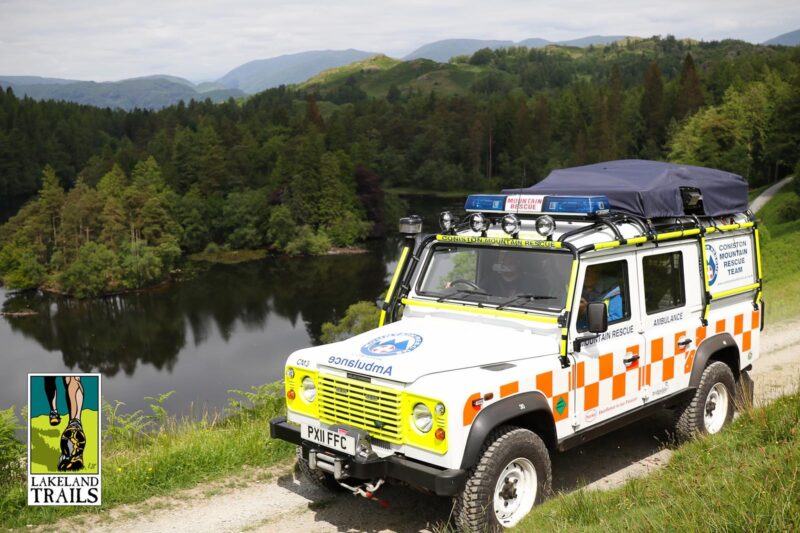
We're always grateful for the support we receive from Coniston Mountain Rescue Team, as their volunteers always turn up in numbers to help at both our Marathon and regular Lakeland Trails in Coniston events. As we're approaching 15 years of working together, we asked their Fundraising Co-ordinator, Liz Ribchester (who's now a converted Lakeland Trailer), for a bit of a background to the team and the amazing work they do:
Founded in 1947, following the tragic death of a walking guide in the area, Coniston Mountain Rescue was the UK's first civilian Mountain Rescue Team. Covering the fells, forests and waters of the Coniston area, our volunteers provide a highly skilled search and rescue service. Team members are qualified swift water technicians, casualty carers, off road drivers, cavers, search dog handlers, climbers and rope technicians - willing and able to help anyone, anywhere whatever the circumstances.
Over the years rescues have involved children, adults, vehicles and animals. We also train constantly, meeting regularly to cover all relevant aspects of rescue work. In addition, team members also attend external courses on off road driving, rope rescue, equipment safety, swift water, first aid…to name but a few. During the current Lockdown situation, we have been training remotely via video conference, covering additional topics including Covid-19 protocol when working with a casualty, effective use of PPE and methods for decontaminating equipment following a call out.
And our commitment doesn’t stop there. As an entirely voluntary charity, we rely on the generosity of the public and other grant-giving organisations to ensure our continued support for those in trouble. In exchange for this support, we make every effort to give back to the communities that help us - in this case, The Lakeland Trails series. Over the years we have provided marshals and support to the events held in both Coniston and Hawkshead. Indeed, many regular Lakeland Trailers will no doubt be familiar with some of our marshals, as they cheer you all on from regular spots around the course.
The team ranges in age from 18 to 76. Some of us have families. Some of us are retired. Some of us work full time. And some of us are Lakeland Trailers ourselves! But whatever our backgrounds, ages or interests, we have one thing in common: we are all proud to call ourselves volunteers for Coniston Mountain Rescue.
Thank you for your on-going support for the work of the team. Stay safe, and we look forward to seeing you all at the Coniston Trail and Marathon events later this year!
An Interview with Dr Grip
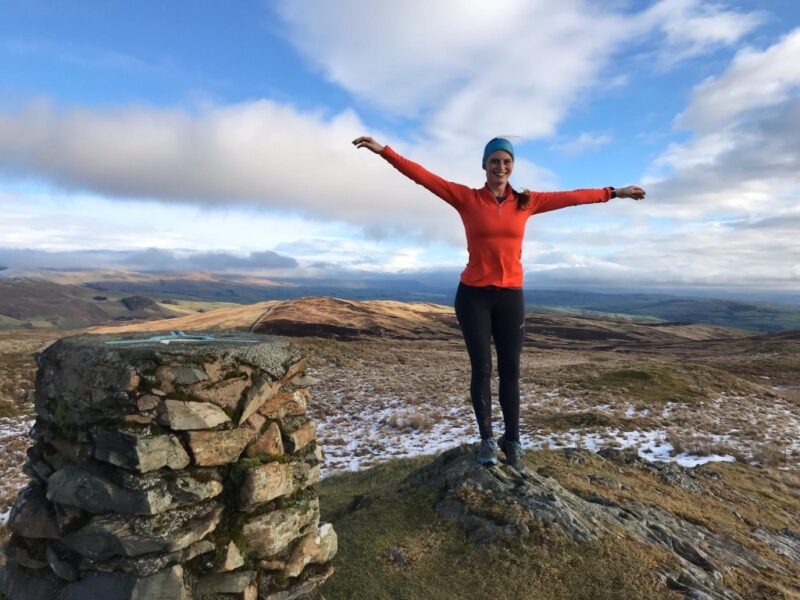
We sat down with inov-8 footwear manager, Dr Bodil Oudshoorn, to get some advice about choosing and looking after a new a trail shoes. Bo, who is known as ‘Dr Grip’ to her colleagues, is not only a footwear genius but an accomplished ultrarunner herself so she knows her stuff!
What is drop and why is it important in your shoe choice?
Your shoe drop is the difference in the amount of cushioning under your heel versus under the ball of your foot. Usually, road running shoes have a 10mm drop, meaning there is 10mm more foam under your heel than under the forefoot. Trail running shoes normally have a bit less, and it is important to keep drop in mind especially when buying your first trail shoes. If you are used to road running shoes, I would recommend not going too low immediately. A shoe with 6mm or 8mm drop should feel similar enough to your body. If you go to a ‘low drop’ shoe straight away (I would say 4mm drop or less), your calf muscles and/or Achilles tendons can get sore!
Which drop a trail runner prefers is very personal. Some people like lower drop shoes because it makes them feel more ‘on their toes’ and they allow the heel of your foot to be closer to the ground. Other people simply don’t get on with low (or even zero) drop shoes. The best thing to remember, is to transition slowly if you change the drop in your shoes.
Can you talk us through the different types of grip on shoes and explain what sort of grip you would choose for different ground?
When picking a trail running shoe I always consider the grip first. Where am I likely to be running? Will it be wet or dry, rocky or muddy, or do you expect all of those? The reason is that the best grip on your shoes is dependent on the terrain. Soft terrain such as grass and mud are best tackled in shoes with longer studs. Long, pointy rubber studs (around 8mm) sink deep and claw through soft ground to give really good grip. So for Lakeland Trails courses like Cartmel when there is usually lots of mud and soft ground, you may want this kind of aggressive grip to ensure you stay upright on the otherwise slippery downhills!
If the terrain is hard and rocky, you don’t need long studs and instead get better grip from shoes with shorter 4mm studs. Because the studs are shorter we can fit more of them on the outsole, which in turn means more rubber is gripping to the hard trail and rocks when you land on them. This gives you confidence when running over hard and rocky terrain such as Lakeland Trails events in Staveley, Ambleside, Coniston and Helvellyn.
If you’re going to be running over a course that is a mix of soft/muddy ground and hard/rocky terrain then you want to go for an all-rounder in grip with intermediate stud length (e.g. 6mm), and studs which are slightly wider. This means you can have both great grip on soft & hard surfaces!
How important is cushioning and why?
Your ideal cushioning is again related to the ground conditions; soft mud naturally gives you cushioning, while on a hard path you probably want to get this comfort and protection from your shoe. Next to that, it also depends on your distance. If you are going a long way, like the Marathon at Coniston or one of the Ultra 100k or 55k Challenges you are likely to want a more cushioned shoe, plus a wider fit for added comfort in the toe box as your feet will most probably swell.
If you want to run fast over shorter distances, I would go for a lightweight shoe with less cushioning.
How often should you change your shoes and what are the signs to look out for when you need a new pair? If you’ve bought graphene shoes will they last longer?
The standard recommendation from shoe manufacturers across the world is to replace your shoes every 300-500 miles (500-800km). It does depend on how heavy your shoes have been used.
Can you give us your top tips for shoe care, to make them last as long as possible?
There are a couple of things you can do to help improve the durability of your shoes, especially the upper materials.
1 Rinse your shoes after a muddy run - I normally just stand in a river at the end. The boggy terrain we often run through is actually quite acidic, and this acidity can cause the materials to degrade quicker. Rinse your shoes out, don’t let the mud ‘cake’ on them and you’ll help your shoes last longer.
2 Don’t expose them to high heat – I would not put my shoes in the washing machine, in the dryer or on top of the radiator. The glues used in the shoes don’t like the heat. Instead, wash them in a bucket with cold or lukewarm water and dry them by stuffing newspaper in.
3 Take the insoles out after a run – I find this helps the shoes to dry properly when they are wet. It makes them a lot less smelly, actually!
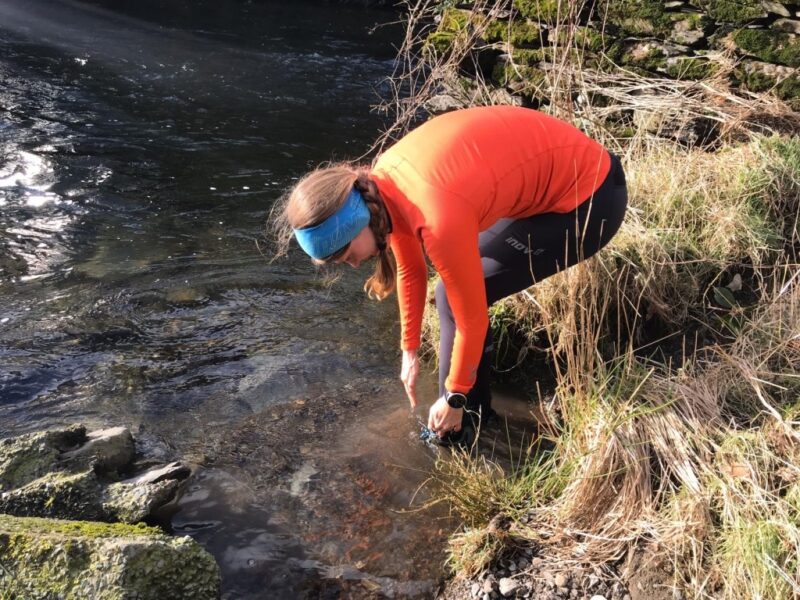
4th November 2025
A great community of runners with virtual events, discounts and more! Read more
12th August 2025
Are you ready to step up? Read more
23rd July 2025
We're delighted to have partnered up with Mind Over Mountains as our official Charity Partner. Read more